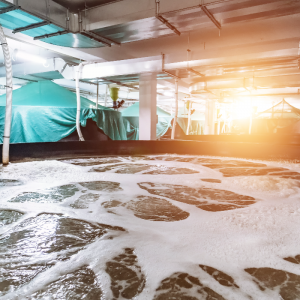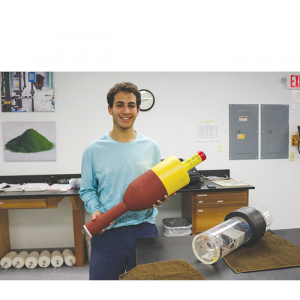
How Genetics is Leveling The Aquaculture Playing Field
| Mon, 13 Apr 2020 - 11:25
Genetics-breeding programs are no longer limited only to affluent fish farming behemoths; there’s an increasing number of cost-effective services coming on-stream to help get small and medium sized operations on the right track.
The rapid growth of the aquaculture sector has seen two different producer models come to the fore. First, there are those operations that will source their eggs from a centralized breeding program and grow them out to market size. Many companies follow this strategy, particularly in the Atlantic salmon and other salmonid sectors. In the other camp, there are those companies that have their own breeding programs in place and manage them in-house.
For those with a program, genetics is essential. Without it, and thereby making parent fish selections on appearance only, farms run the risk of mating siblings, Xelect CEO, Ian Johnston told SeafoodSource.
“If you’re mating brothers and sisters for any length of time then you will suffer a loss of vigor, of fecundity, and other things that will make your business unsustainable,” he said.
Established in 2012, St Andrews, Scotland-based Xelect provides genetic services to aquaculture operations all over the world. Its core business is focused on managing breeding selection services. To this end, it has built up a team comprising a broad range of skillsets – incorporating aquaculture specialists, fish biologists, physiologists, quantitative geneticists, computer scientists and more. Indeed, a dozen of Xelect’s current team of 15 have doctoral degrees.
“It is a big data science and it’s at the cutting-edge of many developments in life sciences, driven by genomics,” Johnston said, adding that aquaculture’s use of genetics is gradually closing the gap in its applications in both plant and terrestrial animal farming.
Shared expertise
To have such a team to maintain a genetics-based breeding program in-house would be an expensive undertaking for even the largest producer. But Xelect’s business model means companies that it works with essentially have a “fractional” but “very cost-effective” share in its team, who will then enable them to manage their own breeding program to a very high level, Johnston said.
“Having your own program, but one managed by a genetics provider like us, means you don’t run into issues with egg suppliers and availability. It also allows you to differentiate your product. Many of our customers are high-end producers that have distinct brands which are associated with quality. Genetics is part of that story and their branding,” he said. “Beyond that, there’s the ability with a trait selection program to drive improvements in performance like growth – salmonids can achieve up to 10 percent improvement per generation – that’s widely achieved in the industry. Then there’s FCR, robustness, disease resistance, resistance to specific pathogens. There are lots of things you can do to improve the performance of your stock.”
Another benefit is having the ability to genetically select stock that’s particularly suited to local environmental conditions, he said.
“We are managing the salmonid breeding programs for some very well-known companies in the southern hemisphere. These producers are beginning to experience problems with high temperatures, due to climate change,” Johnston said. “If you’re just buying a standard egg then there’s no scope to do anything about that, but if you are running your own breeding program, then you can select fish that have a better performance in warmer summer temperatures.”
Differentiated offering
Xelect’s business has grown a lot in the eight years since launching out of the University of St Andrews. It’s also not alone in the marketplace, with two similarly-sized genetics service providers – one in Norway and one in North America.
There are, however, some key differences.
“We have set Xelect up in such a way that we can do everything in-house,” Johnston said. “We have our own laboratories, we do our own genomic sequencing, while at least one of our competitors is outsourcing things like that. And for breeding programs where things are time critical, it’s really good to have that under your control rather than sending off samples and then waiting for the results.”
Johnston said this “self-sustaining philosophy” led Xelect’s to launch a new rapid response suite of services in February. Called “Xelect Express,” it provides quick access to the laboratory’s expertise for genotyping, pedigree assignment, gene expression, ploidy and sex determination.
Xelect Express is a standalone offering, positioned between the company’s comprehensive Xelect Elite breeding program and its basic Xelect Direct services. The former includes full genetic analysis of a client’s available bloodstock, operational evaluations, the development of a bespoke breeding program, and all the tools and databases needed to meet its commercial objectives.
“Xelect Elite is a big task in data management and project management. We are also now starting to roll-out a very user-friendly front-end for our clients so they can enter data a way that doesn’t cause mistakes and which makes it easily useable for us,” Johnston said. “Our Xelect Direct is a lower level of support, but it’s still extremely useful. It utilizes the same highly skilled staff, the same level of expertise, but it comes without the dedicated account management, and it’s on a pay-as-you-go basis. For every big company out there, there’s probably 10 wanting a little bit of steer on genetics – that’s what our Xelect Direct service does.”
The Xelect Direct service, Johnston said, is for companies that aren’t quite at the level of doing a large breeding program, but still want access to proper genetic support.
“In the new Direct [service], we have recognized that most of our customers are medium-sized companies and it takes quite a bit of resource to have a full-blown breeding program management service,” he said. “Nevertheless, there are lots and lots of companies that really want to do some genetics.”
Emerging technologies
With regards to where aquaculture genetics is heading, Johnston explained that in the past five years, there has been a strong uptake of genomic selection. This involves the use of tens of thousands of markers to estimate the breeding value of parent fish.
While genomic selection remains very expensive, Xelect is involved in ongoing projects aimed at addressing this barrier. Among these, it is an industrial partner in both the E.U.-led AquaFaang project – which is run from the Norwegian University of Life Science – and the U.K. Research Councils-funded AquaLeap project – coordinated by the Roslin Institute at the University of Edinburgh.
“In both of these projects, which have different objectives, we are devising much, much more cost-effective ways of doing genomic selection. They will be a fraction of the current price,” Johnston said.
To do this genotyping, marker panels are being used that can determine parent assignment, genomic selection, and also marker-assisted selection (MAS), which is where functional markers locate a particular genetic variant that can have a significant effect on fish traits.
“There’s a whole range of new ‘precision breeding’ tests that’s coming. These are based around sequencing and they will be revolutionary, and I think we are pretty much at the forefront of that,” Johnston said. “Establishing low-cost genomic selection means that in the future it won’t be just the preserve of the few; it will be brought down to a price that it can be used by the many.”
Source: Seafood Source






















